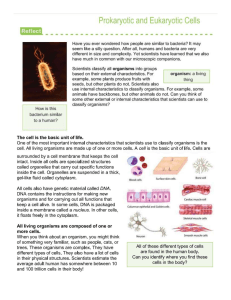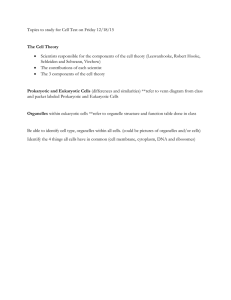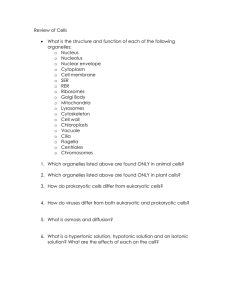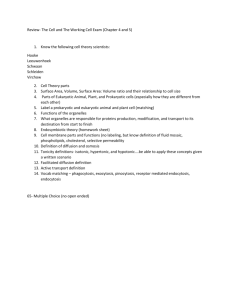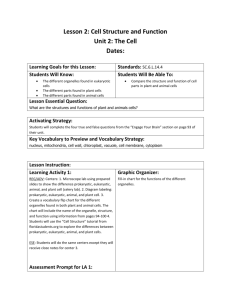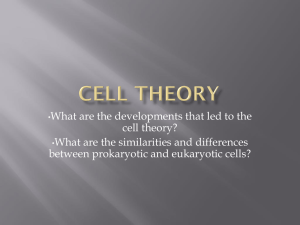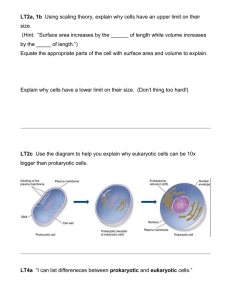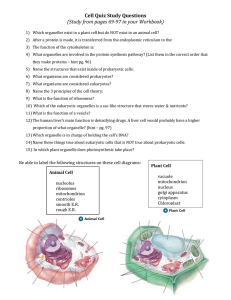Cell Biology Guided Reading Questions
advertisement
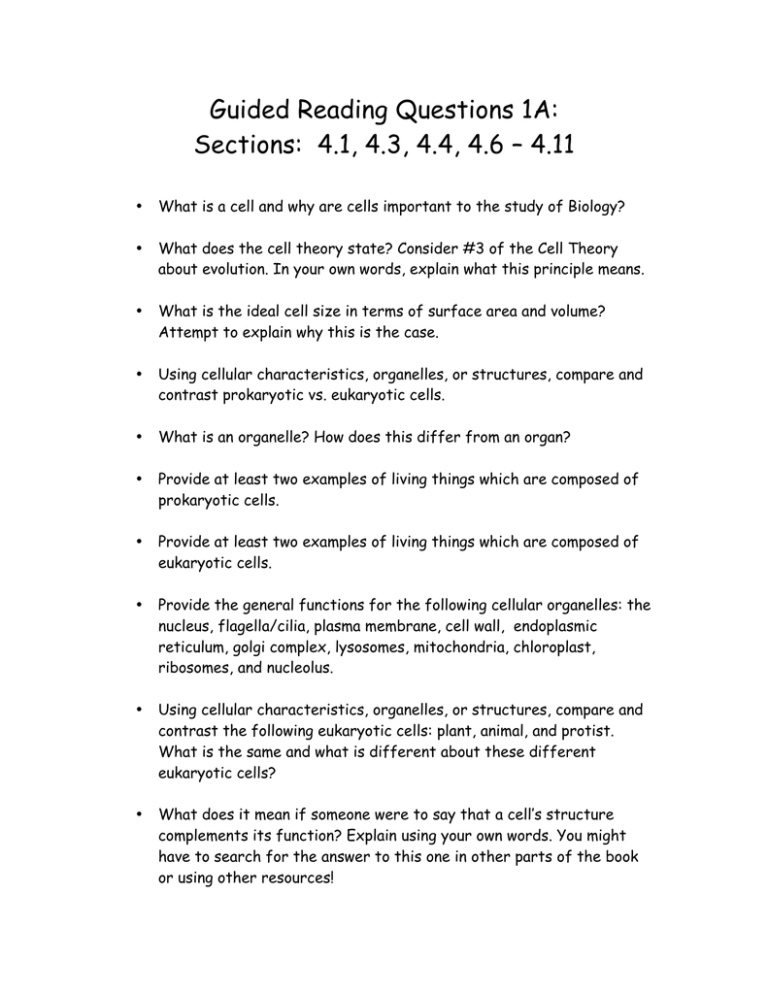
Guided Reading Questions 1A: Sections: 4.1, 4.3, 4.4, 4.6 – 4.11 • What is a cell and why are cells important to the study of Biology? • What does the cell theory state? Consider #3 of the Cell Theory about evolution. In your own words, explain what this principle means. • What is the ideal cell size in terms of surface area and volume? Attempt to explain why this is the case. • Using cellular characteristics, organelles, or structures, compare and contrast prokaryotic vs. eukaryotic cells. • What is an organelle? How does this differ from an organ? • Provide at least two examples of living things which are composed of prokaryotic cells. • Provide at least two examples of living things which are composed of eukaryotic cells. • Provide the general functions for the following cellular organelles: the nucleus, flagella/cilia, plasma membrane, cell wall, endoplasmic reticulum, golgi complex, lysosomes, mitochondria, chloroplast, ribosomes, and nucleolus. • Using cellular characteristics, organelles, or structures, compare and contrast the following eukaryotic cells: plant, animal, and protist. What is the same and what is different about these different eukaryotic cells? • What does it mean if someone were to say that a cell’s structure complements its function? Explain using your own words. You might have to search for the answer to this one in other parts of the book or using other resources!
